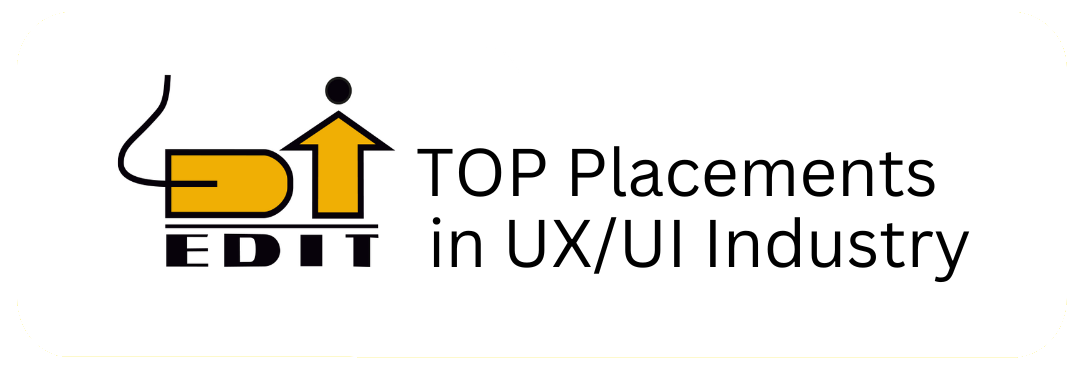UX LENS
News and Tips

Corporate Identity in UX
In the digital age, corporate identity has transcended beyond just logos and taglines. It’s about creating a cohesive experience that resonates with users at every touchpoint. UX design plays a pivotal role in this, as it’s the bridge between the brand and the user.
What Is Corporate Identity?
Corporate Identity in UX refers to a set of elements developed by a company to create a specific image in the eyes of consumers. It’s distinct from branding, which focuses on creating a unique brand. Corporate identity includes visual elements like logos, colours, shapes, and slogans that become associated with a company’s products and services.
Why Is Corporate Identity Important for UX/UI Design?
The importance of Corporate Identity in UX can be summed it up in following points:
Recognition: Consistent branding elements across digital touchpoints foster brand recognition and trust.
Emotional Connection: Corporate identity forms an emotional link between the company and its audience.
Design Alignment: UX designers must ensure that their solutions complement and match the client’s corporate identity. For example, using specific colours or shapes that resonate with the brand’s image.
Creativity: Creativity is key to standing out in a crowded market. Designers need to find innovative solutions that align with the company’s identity while avoiding clichés.
How can UX designers incorporate corporate identity into their work?
1. Research and Understand the Brand: Start by thoroughly understanding the company’s brand, mission, values, and target audience. This knowledge will guide your design decisions.
2. Visual Elements:
- Logo: Ensure that the company’s logo is consistently used across all digital interfaces. Maintain its proportions, colours, and placement.
- Colour Palette: Use the brand’s official colour palette in your designs. Consistency in colour reinforces brand recognition.
- Typography: Opt for fonts that match the brand’s personality. For example, a tech company might use a modern sans-serif font, while a luxury brand may prefer elegant serifs.
3. UI Components:
- Buttons and Icons: Customise buttons and icons to match the brand’s style. Consider using shapes or symbols associated with the brand.
- Forms and Inputs: Design form fields, checkboxes, and radio buttons in line with the brand’s aesthetics.
- Navigation: Create a navigation structure that reflects the brand’s hierarchy and terminology.
4. Content Tone and Voice:
- Adapt the tone of your copywriting to match the brand’s voice. Is it formal, friendly, or playful?
- Use consistent terminology and messaging across the interface.:
5. Consistency Across Platforms
- Ensure that the brand’s identity remains consistent across web, mobile, and other platforms.
- Test your designs on different devices to maintain coherence.:
6. Accessibility and Usability
- While incorporating brand elements, prioritise accessibility and usability. Don’t compromise user experience for the sake of branding.
- Test colour contrast, readability, and navigation flow.
What are the examples of good corporate identity in UX design?
- Apple: Known for its minimalist design, Apple’s UX is user-friendly and consistent across all devices, reflecting its brand identity of innovation and quality.
- Google: Google’s UX design is straightforward and functional, with a focus on speed and efficiency, mirroring its corporate identity of being accessible and user-centric.
- Airbnb: With a focus on community and belonging, Airbnb’s UX design is warm and inviting, encouraging users to explore and connect.
- Nike: Nike’s UX design is bold and dynamic, emphasising performance and inspiration, in line with its identity as a motivator for athletes.
Corporate identity in UX design isn’t just about looking good; it’s about creating an experience that users will love and remember. It’s an ongoing process of aligning brand values with user needs to create a harmonious brand experience.
Placement of the week

Karan Mathiyalagan - B.Sc Computer Science
EDIT UX UI is the right choice if you are genuinely interested in design field. Feedback is given on every assignment which helps is completing the projects on time. They help with interview preparation, resume and portfolio building and offer valuable suggestions/ tips. It was great balancing learning and work as the course is LIVE online.
Corporate Identity in UX
In the digital age, corporate identity has transcended beyond just logos and taglines. It’s about creating a cohesive experience that resonates with users at every touchpoint. UX design plays a pivotal role in this, as it’s the bridge between the brand and the user.
What Is Corporate Identity?
Corporate Identity in UX refers to a set of elements developed by a company to create a specific image in the eyes of consumers. It’s distinct from branding, which focuses on creating a unique brand. Corporate identity includes visual elements like logos, colours, shapes, and slogans that become associated with a company’s products and services.
Why Is Corporate Identity Important for UX/UI Design?
The importance of Corporate Identity in UX can be summed it up in following points:
Recognition: Consistent branding elements across digital touchpoints foster brand recognition and trust.
Emotional Connection: Corporate identity forms an emotional link between the company and its audience.
Design Alignment: UX designers must ensure that their solutions complement and match the client’s corporate identity. For example, using specific colours or shapes that resonate with the brand’s image.
Creativity: Creativity is key to standing out in a crowded market. Designers need to find innovative solutions that align with the company’s identity while avoiding clichés.
How can UX designers incorporate corporate identity into their work?
1. Research and Understand the Brand: Start by thoroughly understanding the company’s brand, mission, values, and target audience. This knowledge will guide your design decisions.
2. Visual Elements:
- Logo: Ensure that the company’s logo is consistently used across all digital interfaces. Maintain its proportions, colours, and placement.
- Colour Palette: Use the brand’s official colour palette in your designs. Consistency in colour reinforces brand recognition.
- Typography: Opt for fonts that match the brand’s personality. For example, a tech company might use a modern sans-serif font, while a luxury brand may prefer elegant serifs.
3. UI Components:
- Buttons and Icons: Customise buttons and icons to match the brand’s style. Consider using shapes or symbols associated with the brand.
- Forms and Inputs: Design form fields, checkboxes, and radio buttons in line with the brand’s aesthetics.
- Navigation: Create a navigation structure that reflects the brand’s hierarchy and terminology.
4. Content Tone and Voice:
- Adapt the tone of your copywriting to match the brand’s voice. Is it formal, friendly, or playful?
- Use consistent terminology and messaging across the interface.:
5. Consistency Across Platforms
- Ensure that the brand’s identity remains consistent across web, mobile, and other platforms.
- Test your designs on different devices to maintain coherence.:
6. Accessibility and Usability
- While incorporating brand elements, prioritise accessibility and usability. Don’t compromise user experience for the sake of branding.
- Test colour contrast, readability, and navigation flow.
What are the examples of good corporate identity in UX design?
- Apple: Known for its minimalist design, Apple’s UX is user-friendly and consistent across all devices, reflecting its brand identity of innovation and quality.
- Google: Google’s UX design is straightforward and functional, with a focus on speed and efficiency, mirroring its corporate identity of being accessible and user-centric.
- Airbnb: With a focus on community and belonging, Airbnb’s UX design is warm and inviting, encouraging users to explore and connect.
- Nike: Nike’s UX design is bold and dynamic, emphasising performance and inspiration, in line with its identity as a motivator for athletes.
Corporate identity in UX design isn’t just about looking good; it’s about creating an experience that users will love and remember. It’s an ongoing process of aligning brand values with user needs to create a harmonious brand experience.
Placement of the week

Karan Mathiyalagan - B.Sc Computer Science
Fashion TV India-UX UI Designer
EDIT UX UI is the right choice if you are genuinely interested in design field. Feedback is given on every assignment which helps is completing the projects on time. They help with interview preparation, resume and portfolio building and offer valuable suggestions/ tips. It was great balancing learning and work as the course is LIVE online.
